Mega888 Online Casino Malaysia Duitnow Slot Ewallet Casino TNG
Selamat datang ke Mega888, platform kasino dalam talian yang semakin popular di Malaysia. Mega888 menawarkan pengalaman kasino dalam talian yang menakjubkan. Kami akan jelajahi keistimewaan Mega888, termasuk penggunaan e-wallet TNG dan sistem pembayaran DuitNow.
Mega888 adalah pilihan utama pemain kasino dalam talian di Malaysia. Ia menawarkan kepelbagaian permainan dan kemudahan serta keselamatan transaksi. Dengan e-wallet TNG dan sistem DuitNow, transaksi deposit dan pengeluaran menjadi lebih cepat dan selamat.
Kami akan memberi panduan lengkap tentang mendaftar dan menggunakan DuitNow. Anda juga akan belajar mengurus e-wallet TNG dan menikmati permainan slot terbaik. Kami akan berkongsi tips untuk meningkatkan peluang kemenangan anda. Siap untuk menjelajahi dunia kasino dalam talian ini?
Intisari Utama
- Mega888 adalah platform kasino dalam talian terkemuka di Malaysia
- Menggunakan e-wallet TNG dan sistem pembayaran DuitNow untuk deposit dan pengeluaran yang mudah dan selamat
- Menawarkan pelbagai permainan slot dan kasino langsung yang menarik
- Mempunyai ciri-ciri keselamatan yang ketat untuk melindungi akaun pengguna
- Terdapat pelbagai bonus dan promosi menarik untuk para pemain
Pengenalan Kepada Platform Mega888 Malaysia
Mega888 adalah platform kasino dalam talian yang sangat popular di Malaysia. Ia mula beroperasi di Malaysia sejak tahun 2015. Sekarang, Mega888 menjadi pilihan utama bagi banyak pemain judi di Malaysia, Singapura, dan Thailand.
Sejarah Mega888 di Malaysia
Mega888 mula beroperasi di Malaysia pada tahun 2015. Dari awal, ia sudah menjadi salah satu platform permainan dalam talian yang paling disegani. Syarikat ini kini memegang lebih daripada 90% bahagian pasaran di Malaysia.
Ciri-ciri Utama Platform
- Menawarkan pelbagai jenis permainan termasuk slot, kasino langsung, dan perjudian sukan.
- Menyediakan antara muka pengguna yang mudah digunakan dan mesra.
- Mempunyai pilihan pembayaran yang fleksibel termasuk e-wallet, kad kredit, dan pemindahan bank.
- Sentiasa mengeluarkan permainan dan promosi baharu untuk mengekalkan pengalaman yang segar bagi para pemain.
Lesen dan Keselamatan
Mega888 beroperasi di bawah lesen yang sah. Ia mengikuti piawaian keselamatan industri yang tinggi untuk melindungi maklumat dan dana pengguna. Teknologi enkripsi canggih digunakan untuk memastikan setiap transaksi kewangan dan maklumat peribadi berada dalam keadaan selamat.
| Statistik Penting |
Angka |
| Bahagian Pasaran Mega888 di Malaysia |
Melebihi 90% |
| Pemain dari Malaysia, Singapura, dan Thailand |
80% |
| Jumlah Muat Turun Aplikasi Mega888 |
Lebih 1 juta |
Mega888 telah membuktikan dirinya sebagai platform kasino dalam talian yang boleh dipercayai dan berprestij di Malaysia. Dengan sejarah yang kukuh, ciri-ciri menarik, dan langkah-langkah keselamatan yang komprehensif, ia menjadi pilihan utama bagi peminat judi atas talian di rantau ini.
Cara Mendaftar Akaun Mega888
Bagi pemain yang ingin menikmati pengalaman akaun kasino dalam talian yang seru, pendaftaran Mega888 sangat mudah. Anda hanya perlu mengikuti beberapa langkah mudah untuk buat akaun di Mega888, yang sangat popular di Malaysia:
- Lawati laman web rasmi Mega888 dan klik butang "Daftar" di atas skrin.
- Isikan maklumat peribadi seperti nama, nombor telefon, alamat e-mel, dan nombor kad pengenalan.
- Pilih mata wang untuk akaun anda - Ringgit Malaysia (RM) atau Dolar Singapura (SGD).
- Cipta kata laluan yang selamat dan mudah diingat untuk melindungi akaun anda.
- Baca dan bersetuju dengan terma dan syarat Mega888.
- Selesaikan pengesahan akaun dengan menghantar salinan dokumen pengenalan diri yang sah.
- Setelah pendaftaran berjaya, anda boleh mula main permainan slot dan kasino menarik di Mega888.
Dengan mengikuti langkah mudah ini, anda akan dapat menikmati pengalaman bermain yang selamat dan menyeronokkan di akaun kasino dalam talian Mega888. Ingatlah untuk selalu menjaga keselamatan akaun anda untuk pengalaman terbaik!
| Statistik Mega888 |
Nilai |
| Bahagian Pasaran Permainan Slot di Malaysia |
Lebih 90% |
| Pemain dari Malaysia, Singapura, dan Thailand |
80% |
| Jumlah Muat Turun Aplikasi Mega888 |
Lebih 1 Juta |
Mega888 telah menjadi pemimpin industri perjudian dalam talian di Malaysia. Mereka menawarkan banyak permainan slot dan kasino yang menarik dengan bonus dan jackpot yang menggoda.
Sistem Pembayaran DuitNow di Mega888
Mega888 adalah platform kasino dalam talian yang popular di Malaysia. Mereka menawarkan pelbagai pilihan pembayaran untuk pengguna. DuitNow adalah salah satu kaedah pembayaran yang ditawarkan, memudahkan transaksi pembayaran dalam talian dan transaksi kasino.
Kelebihan Menggunakan DuitNow
Penggunaan DuitNow di Mega888 memberikan beberapa kelebihan:
- Proses transaksi yang pantas dan selamat
- Tiada bayaran tambahan atau yuran tersembunyi
- Integrasi yang lancar dengan sistem Mega888
- Kebolehpercayaan dan reputasi DuitNow sebagai platform pembayaran dalam talian
Langkah-langkah Transaksi DuitNow
Ini adalah langkah mudah untuk transaksi menggunakan DuitNow di Mega888:
- Log masuk ke akaun Mega888 anda
- Navigasi ke halaman deposit dan pilih DuitNow sebagai kaedah pembayaran
- Masukkan jumlah deposit yang dikehendaki
- Pilih bank anda dan log masuk ke akaun bank anda untuk mengesahkan transaksi
- Transaksi anda akan diproses dengan segera dan baki anda akan dikemaskini di Mega888
Dengan menggunakan DuitNow, pemain Mega888 dapat menikmati pengalaman pembayaran yang lancar. Ini memudahkan aktiviti transaksi kasino mereka.
slot ewallet mega888 TNG
Bagi peminat kasino dalam talian, menggunakan e-wallet untuk bermain slot di Mega888 sangat popular. Anda boleh menyambungkan akaun e-wallet Touch 'n Go (TNG) anda. Ini membolehkan anda menikmati keselesaan dan keselamatan pembayaran mudah alih semasa bermain slot Mega888.
Kelebihan menggunakan e-wallet TNG untuk slot Mega888 adalah:
- Transaksi yang pantas dan mudah
- Keselamatan terjamin dengan teknologi enkripsi
- Tiada had deposit minimum yang tinggi
- Pemantauan transaksi yang lebih baik
Untuk mula menggunakan TNG di Mega888, ikuti langkah-langkah berikut:
- Daftar dan pasangkan akaun TNG anda dengan akaun Mega888 anda.
- Pilih TNG sebagai kaedah pembayaran semasa membuat deposit.
- Masukkan jumlah deposit dan sahkan transaksi melalui aplikasi TNG.
- Dana akan terus dimasukkan ke dalam akaun Mega888 anda.
Dengan kemudahan e-wallet TNG, pengalaman bermain slot Mega888 anda akan lebih lancar dan selamat. Jangan tunggu lagi! Daftarkan akaun TNG anda sekarang dan mulakan bertaruh di platform Mega888 yang terpercaya.
Permainan Popular di Mega888
Mega888 adalah platform kasino dalam talian yang semakin popular di Malaysia. Ia menawarkan pelbagai permainan slot dan kasino langsung yang menarik. Pemain Mega888 suka bermain permainan slot popular seperti 918Kiss dan Kiss918.
Kasino langsung juga menjadi tarikan utama. Pelbagai pilihan seperti roulette, blackjack, dan baccarat tersedia.
Slot Games Terbaik
Mega888 menawarkan pelbagai permainan Mega888 yang menarik. Anda boleh menemui tema yang pelbagai dan peluang untuk meraih jackpot besar. Berikut adalah beberapa slot terpopular yang boleh anda cuba:
- Mega Moolah
- Gladiator
- Aztec Gems
- Dragons of the North
- Cleopatra
Live Casino Games
Bagi peminat kasino langsung, Mega888 mempunyai pilihan menarik. Anda boleh menikmati:
- Roulette
- Blackjack
- Baccarat
- Sic Bo
- Dragon Tiger
Dengan pelbagai pilihan permainan slot dan kasino langsung, Mega888 menawarkan pengalaman bermain yang menyeronokkan. Pemain di Malaysia pasti akan menikmati.
Panduan Deposit Menggunakan E-wallet
Untuk menikmati kasino dalam talian di Mega888, kaedah deposit penting. E-wallet semakin popular kerana mudah dan selamat. Kami akan tunjukkan cara deposit menggunakan e-wallet di Mega888.
Kelebihan Menggunakan E-wallet untuk Deposit
- Mudah dan cepat - Deposit dengan Touch 'n Go, GrabPay, dan Boost sangat ringkas.
- Keselamatan tinggi - E-wallet melindungi maklumat kewangan anda.
- Kawalan deposit - Anda boleh pantau deposit anda dengan mudah.
Langkah-langkah Deposit Menggunakan E-wallet
- Log masuk ke akaun Mega888 anda.
- Pergi ke "Deposit" di laman atau aplikasi Mega888.
- Pilih e-wallet seperti Touch 'n Go, GrabPay, atau Boost.
- Masukkan jumlah deposit yang dikehendaki.
- Ikut arahan untuk menyelesaikan deposit di aplikasi e-wallet.
- Log masuk ke aplikasi e-wallet dan sahkan transaksi.
- Dana akan masuk ke akaun Mega888 anda segera.
Dengan mengikuti langkah mudah ini, deposit ke Mega888 anda akan cepat dan selamat. Ini memastikan pengalaman bermain yang lancar dan selamat.
Keselamatan Transaksi di Mega888
Di Mega888, keselamatan kasino dalam talian sangat penting. Mereka mempunyai langkah keselamatan yang lengkap untuk melindungi pengguna. Ini termasuk melindungi dari aktiviti yang tidak sah.
Teknologi Enkripsi
Mega888 menggunakan enkripsi data canggih untuk melindungi transaksi kewangan. Data sensitif seperti maklumat kad kredit dan perbankan disulitkan dengan algoritma tinggi. Ini untuk memastikan keselamatan maksimum.
Sistem Verifikasi
Mega888 juga mempunyai sistem verifikasi pengguna yang ketat. Mereka memerlukan pengesahan identiti melalui pelbagai langkah. Ini termasuk pengesahan dua faktor untuk memastikan hanya pemilik akaun sah yang boleh mengakses dan melakukan transaksi.
Dengan teknologi enkripsi dan sistem verifikasi yang kuat, Mega888 mencipta persekitaran bermain yang selamat. Ini untuk semua pengguna di Malaysia.
Bonus dan Promosi Mega888
Di Mega888, pemain dapat menikmati banyak bonus dan promosi menarik. Ini memberikan nilai tambah kepada pengalaman mereka berjudi online. Dari bonus selamat datang yang menggoda hingga promosi musim yang mengujakan, Mega888 sentiasa memberi peluang kepada pemain untuk mendapatkan lebih banyak ganjaran.
Bonus Selamat Datang adalah tawaran khas untuk pemain baru. Bonus ini boleh digunakan untuk bermain pelbagai jenis permainan seperti slot dan kasino langsung. Ini memberikan pemain peluang untuk memulakan pengalaman perjudian mereka dengan lebih baik.
Bonus Deposit diberikan apabila pemain membuat deposit ke dalam akaun mereka. Jumlah bonus yang diberikan bergantung kepada jumlah deposit yang dibuat. Ini memberikan insentif kepada pemain untuk terus bermain dan meningkatkan deposit mereka.
| Jenis Bonus |
Perincian |
Syarat Tuntutan |
| Bonus Selamat Datang |
Bonus sehingga RM1,000 untuk pemain baru |
Daftar akaun baru dan buat deposit pertama |
| Bonus Deposit |
Bonus sehingga 150% daripada jumlah deposit |
Buat deposit ke dalam akaun dan penuhi syarat taruhan |
| Promosi Bermusim |
Bonus dan ganjaran istimewa seperti Birthday Month Bonus |
Ikuti syarat dan tempoh promosi yang ditetapkan |
Mega888 juga sering menjalankan promosi bermusim. Ini memberikan peluang kepada pemain untuk mendapatkan bonus dan ganjaran istimewa. Contohnya, promosi Birthday Month Bonus memberikan bonus tambahan pada bulan ulang tahun pemain.
Dengan pelbagai bonus kasino dan promosi Mega888, pemain boleh memanfaatkan tawaran khas ini. Ini meningkatkan peluang mereka untuk menang dan menikmati pengalaman perjudian yang lebih menguntungkan.
Panduan Bermain Slot Online
Bermain slot di Mega888 boleh sangat menyeronok dan menguntungkan. Namun, anda perlu strategi dan pengurusan modal yang baik. Ikuti panduan ini untuk meningkatkan peluang menang anda.
Tips Menang
Anda boleh meningkatkan peluang menang dengan mengikuti beberapa tips ini:
- Pelajari ciri-ciri permainan dan mekanisme pembayaran.
- Gunakan bonus dan promosi untuk tambah modal.
- Tetapkan had pertaruhan dan ikut disiplin.
- Jangan main tanpa strategi, main dengan bijak.
- Pilih permainan dengan RTP tinggi.
Strategi Pengurusan Modal
Pengurusan modal yang baik sangat penting untuk menang. Berikut adalah beberapa strategi yang boleh anda gunakan:
- Tentukan had deposit dan pertaruhan yang sesuai dengan kemampuan kewangan anda.
- Gunakan teknik 'bankroll management' untuk bahagikan modal ke beberapa sesi permainan.
- Elak risiko yang terlalu tinggi dengan tidak meningkatkan pertaruhan melebihi kemampuan anda.
- Belajar dari setiap pengalaman dan sesuaikan strategi anda jika perlu.
- Main dengan hati-hati dan bertanggungjawab untuk pengalaman yang seronok dan menguntungkan.
Dengan menerapkan strategi slot, tips menang, dan pengurusan wang yang betul, anda boleh meningkatkan peluang menang. Ingatlah untuk main dengan hati-hati dan bertanggungjawab.
Aplikasi Mega888 Mobile
Dunia aplikasi kasino mudah alih kini berkembang pesat. Mega888 mobile adalah salah satu platform terkemuka di Malaysia. Ia menawarkan banyak permainan dalam talian yang menarik dan menyeronokkan.
Para pemain boleh menikmati pengalaman kasino yang luar biasa hanya dengan menggunakan peranti mudah alih mereka.
Bagi mereka yang ingin mencoba Mega888 di mana sahaja dan bila-bila masa, aplikasi mudah alih Mega888 adalah pilihan yang ideal. Aplikasi ini boleh dimuat turun dengan mudah dan cepat. Anda boleh mendapatkannya dari Google Play Store atau App Store.
Ini memberikan akses lancar ke banyak permainan slot, kasino langsung, dan lain-lain.
Ciri-ciri Utama Aplikasi Mega888 Mobile
- Antara muka pengguna yang intuitif dan mesra pengguna
- Akses kepada semua permainan popular Mega888, termasuk permainan slot, kasino langsung, dan banyak lagi
- Proses log masuk dan daftar yang selamat dan mudah
- Kemampuan untuk melakukan deposit dan pengeluaran dengan cepat dan selamat melalui pelbagai kaedah pembayaran, termasuk ewallet seperti Touch 'n Go, Boost, dan GrabPay
- Notifikasi real-time mengenai promosi, bonus, dan acara terbaru
- Sokongan pelanggan 24/7 yang bersedia membantu dengan sebarang pertanyaan atau masalah
Aplikasi mudah alih Mega888 menawarkan ciri-ciri yang komprehensif dan pengalaman yang lancar. Ini menjadikannya pilihan unggul bagi peminat permainan dalam talian di Malaysia. Anda boleh menikmati kemudahan dan keseronokan aplikasi kasino mudah alih Mega888 di mana saja dan bila-bila masa.
Perbandingan E-wallet di Mega888
Mega888 adalah platform kasino dalam talian terkemuka di Malaysia. Ia menawarkan pelbagai pilihan e-wallet untuk pembayaran. Tiga e-wallet utama adalah Touch 'n Go, GrabPay, dan Boost. Setiap e-wallet mempunyai kelebihan dan kekurangan yang berbeza.
Touch 'n Go
Touch 'n Go adalah e-wallet paling popular di Malaysia. Ia digunakan banyak di Mega888. Ia menawarkan had transaksi tinggi dan proses pembayaran yang cepat.
Pengguna perlu pastikan akaun Touch 'n Go mereka mempunyai baki yang cukup. Ini penting sebelum deposit ke Mega888.
GrabPay
GrabPay semakin popular di kalangan pemain Mega888. Ia menawarkan pengalaman pembayaran yang mudah dan cepat. Had transaksi GrabPay juga fleksibel.
Pemain perlu berhati-hati dengan yuran tambahan GrabPay. Ini mungkin dikenakan untuk sesetengah transaksi.
Boost
Boost adalah e-wallet lain yang diterima di Mega888. Ia mempunyai proses transaksi yang cepat dan had yang munasabah. Namun, kurang popular berbanding Touch 'n Go dan GrabPay.
Pemain mungkin menghadapi cabaran dalam menggunakan Boost di Mega888.
| Ciri-Ciri |
Touch 'n Go |
GrabPay |
Boost |
| Had Transaksi |
Tinggi |
Fleksibel |
Munasabah |
| Kelajuan Pemprosesan |
Pantas |
Pantas |
Pantas |
| Keselamatan |
Baik |
Baik |
Baik |
| Populariti di Mega888 |
Tinggi |
Sederhana |
Rendah |
Ketiga e-wallet ini menawarkan pengalaman pembayaran yang baik di Mega888. Pemain perlu mempertimbangkan kelebihan dan kekurangan setiap e-wallet. Ini penting untuk memilih pilihan terbaik.
Sokongan Pelanggan 24/7
Di Mega888, kami tahu betapa pentingnya khidmat pelanggan yang cepat. Kami menawarkan sokongan 24 jam setiap hari, 7 hari seminggu. Ini untuk memastikan anda dapat bantuan kapan saja.
Pasukan kami yang berpengalaman siap membantu anda. Mereka akan menjawab pertanyaan atau menyelesaikan masalah anda cepat. Kami ada untuk membantu dengan khidmat pelanggan terbaik, sama ada soalan teknikal atau nasihat.
- Hubungi kami melalui talian telefon 24/7
- Hantar e-mel kepada bantuan Mega888 untuk pertanyaan bertulis
- Layari laman web kami untuk sokongan dalam talian dan Soalan Lazim
Kami ingin anda menikmati pengalaman bermain yang lancar dan menyeronok. Jangan ragu untuk menghubungi kami jika anda butuh bantuan.
| Kaedah Sokongan |
Waktu Operasi |
Tindak Balas Purata |
| Telefon |
24 jam sehari, 7 hari seminggu |
20 saat |
| E-mel |
24 jam sehari, 7 hari seminggu |
6 jam |
| Borang Hubungi dalam talian |
24 jam sehari, 7 hari seminggu |
2 jam |
"Sokongan pelanggan yang cepat dan mesra pengguna adalah keutamaan kami di Mega888."
Tips Keselamatan Akaun
Membina keselamatan akaun dalam talian yang kukuh sangat penting. Ini untuk melindungi data anda di kasino selamat seperti Mega888. Berikut adalah beberapa tips untuk meningkatkan keselamatan akaun anda:
- Pilih kata laluan yang kuat dan unik untuk setiap akaun anda. Jangan gunakan maklumat peribadi yang mudah diteka.
- Aktifkan pengesahan dua faktor untuk tambahan lapisan keselamatan semasa log masuk.
- Waspadalah terhadap e-mel, mesej, atau panggilan telefon yang mencurigakan. Mereka mungkin cuba mendapatkan maklumat sensitif anda.
- Elak menggunakan rangkaian awam yang tidak selamat atau mengakses akaun anda di tempat awam.
- Tetapkan dinyahaktifkan akaun Mega888 anda jika tidak akan digunakan untuk masa yang lama.
Dengan mengikuti langkah-langkah ini, anda dapat meningkatkan perlindungan data. Anda juga dapat menikmati kasino selamat di Mega888 dengan lebih tenang.
Trend Terkini Casino Online Malaysia
Industri perjudian dalam talian di Malaysia mengalami perubahan besar dalam beberapa tahun terakhir. Teknologi baru dan perubahan undang-undang mempengaruhi trend kasino online. Mari kita lihat beberapa trend terkini yang menarik perhatian.
Perkembangan Teknologi
Teknologi canggih menjadi sorotan utama dalam kasino online. Realiti maya (VR) dan blockchain digunakan dalam permainan. Ini membuat pengalaman bermain lebih menarik dan realistik tanpa keluar rumah.
Teknologi enkripsi dan keselamatan data juga berkembang. Ini meningkatkan keamanan transaksi keuangan di platform trend kasino dalam talian. Pemain lebih yakin untuk terlibat dalam teknologi kasino ini.
Perubahan Industri
Industri perjudian Malaysia mengalami perubahan dalam peraturan. Kerajaan memperketat peraturan untuk mengawal perjudian. Ini membantu pertumbuhan trend kasino dalam talian yang sah.
Pemain lebih suka menggunakan e-wallet untuk pembayaran. Ini memberikan lebih banyak pilihan dan keselesaan dalam transaksi online.
Secara keseluruhan, trend kasino dalam talian di Malaysia berkembang pesat. Inovasi teknologi dan perubahan industri memungkinkan pengalaman kasino online yang lebih baik, selamat, dan menarik.
Panduan Pengeluaran Wang
Apabila anda menang di Mega888 di Malaysia, penting untuk tahu cara mengeluarkan wang kemenangan. Mega888 memberikan panduan lengkap untuk memudahkan proses ini.
Langkah-langkah Pengeluaran Wang
- Log masuk ke akaun Mega888 anda.
- Pilih menu "Pengeluaran" atau "Tarik Dana".
- Pilih kaedah pengeluaran yang anda inginkan, seperti e-wallet atau perbankan dalam talian.
- Masukkan jumlah wang yang ingin anda keluarkan.
- Pastikan maklumat akaun bank atau e-wallet anda adalah tepat.
- Ikuti arahan selanjutnya untuk mengesahkan transaksi pengeluaran.
Had Pengeluaran
Mega888 membatasi minimum pengeluaran RM50 dan maksimum RM50,000. Ini untuk memastikan pengeluaran kasino lancar dan proses pembayaran cepat.
Tempoh Pemprosesan
Mega888 memproses wang kemenangan anda dalam satu hari bekerja. Tiada aduan masalah pengeluaran dari pemain kepada khidmat pelanggan Mega888.
| Kaedah Pengeluaran |
Tempoh Pemprosesan |
| E-wallet |
1 hari bekerja |
| Perbankan dalam talian |
1 hari bekerja |
Pemain mungkin perlu tunjuk bukti pengenalan diri. Ini untuk memastikan pengeluaran selamat.
"Mega888 menyediakan proses pengeluaran yang mudah, cepat dan selamat bagi memberikan pengalaman terbaik kepada para pemain."
Kesimpulan
Mega888 adalah pilihan utama di Malaysia untuk kasino dalam talian. Mereka memegang lebih daripada 90% pasaran permainan slot. Lebih dari 80% pemain dari Malaysia, Singapura, dan Thailand memilih Mega888.
Aplikasi Mega888 mudah digunakan dan dimuat turun oleh lebih dari satu juta pengguna. Mereka menawarkan banyak permainan slot, bonus menarik, dan sistem pembayaran e-wallet seperti DuitNow. Ini menjadikan Mega888 pilihan terbaik di Malaysia.
Bagi pemain berpengalaman atau baru, Mega888 adalah platform yang sesuai. Mereka memprioritaskan keselamatan, menawarkan bonus menarik, dan pengalaman bermain yang luar biasa. Ini menjadikan Mega888 pilihan utama untuk menikmati permainan kasino dalam talian dengan bertanggungjawab.
FAQ
Apakah Mega888 dan bagaimana ia beroperasi di Malaysia?
Mega888 adalah platform kasino dalam talian yang popular di Malaysia. Ia menawarkan pelbagai permainan seperti slot, kasino langsung. Sistem pembayaran DuitNow dan sokongan e-wallet TNG menjadikan pengalaman bermain selamat dan menyeronok.
Bagaimana saya boleh mendaftar akaun Mega888?
Proses pendaftaran akaun Mega888 mudah dan selamat. Anda perlu berikan maklumat peribadi dan bukti identiti. Setelah itu, akaun anda akan aktif.
Apakah kelebihan menggunakan DuitNow sebagai kaedah pembayaran di Mega888?
DuitNow memudahkan transaksi di Mega888. Ia cepat, selamat dan mudah digunakan. Kelebihannya termasuk had transaksi tinggi dan pemprosesan yang cekap.
Bagaimana saya boleh menggunakan e-wallet TNG untuk bermain slot di Mega888?
Menggunakan e-wallet TNG di Mega888 mudah. Anda hanya perlu hubungkan akaun TNG dengan Mega888. Kemudian, boleh buat deposit dan pertaruhan dengan e-wallet.
Apakah permainan slot dan kasino langsung yang paling popular di Mega888?
Mega888 menawarkan banyak permainan slot menarik. Juga, permainan kasino langsung seperti roulette, blackjack, dan baccarat popular. Anda boleh pilih permainan yang sesuai dengan gaya anda.
Bagaimana saya boleh membuat deposit di Mega888 menggunakan e-wallet?
Mega888 memudahkan deposit dengan e-wallet seperti TNG, GrabPay, dan Boost. Ikuti langkah mudah untuk hubungkan e-wallet dan buat deposit selamat ke akaun anda.
Bagaimana Mega888 melindungi keselamatan transaksi pengguna?
Mega888 gunakan teknologi enkripsi canggih dan sistem verifikasi. Ini memastikan keselamatan akaun dan transaksi pengguna. Mereka juga ikut piawaian industri untuk perlindungan data.
Apakah bonus dan promosi yang ditawarkan oleh Mega888?
Mega888 tawarkan banyak bonus dan promosi menarik. Termasuk bonus selamat datang, deposit, dan promosi bermusim. Manfaatkan tawaran ini untuk tingkatkan peluang menang.
Bagaimana saya boleh bermain slot online dengan selamat dan berkesan di Mega888?
Mega888 ada panduan lengkap untuk bermain slot online. Termasuk tips untuk menang, strategi pengurusan modal, dan nasihat bertanggungjawab.
Apakah kelebihan menggunakan aplikasi Mega888 berbanding platform web?
Aplikasi Mega888 menawarkan pengalaman permainan yang lebih baik. Ia mudah digunakan, antara muka menarik, dan prestasi tinggi. Ini memberikan pengalaman bermain yang lancar.

Creative, Entrepreneurial, and Global: 21st Century Education
Home » Blogs, China/Chinese, Education Reforms, Globalization
How Does PISA Put the World at Risk (Part 4): Misleading the World
29 March 2014
76,421
7 Comments
How Does PISA Put the World at Risk: Part 1 Part 2 Part 3
Part 4
China’s poorest beat our best pupils—The Telegraph (UK), 2-17-2014
Children of Shanghai cleaners better at math than kids of Israeli lawyers—Haaretz (Israel), 2-19-2014
Cleaners’ children in China beat kids of US, UK professionals at maths: study—NDTV (India), 2-18-2014
Children of Chinese janitors outscore wealthy Canadians in global exams—The Globe and Mail (Canada), 2-19- 2014
These are some of the most recent sensational headlines generated by PISA with a 4-page report entitled Do parents’ occupations have an impact on student performance released in February 2014. These headlines exemplify the secret of PISA’s great success as a masterful illusionist: effective misdirection of attention by exploiting human instinct for competition.
From the start, the entire PISA enterprise has been designed to capitalize on the intense nationalistic concern for global competitiveness by inducing strong emotional responses from the unsuspecting public, gullible politicians, and sensation-seeking media. Virtually all PISA products, particularly its signature product—the league tables, are intended to show winners and losers, in not only educational policies and practices of the past, but more important, in capacity for global competition in the future. While this approach has made PISA an extremely successful global enterprise, it has misled the world down a path of self-destruction, resulting in irrational policies and practices that are more likely to squander precious resources and opportunities than enhancing capacity for future prosperity.
Take the report on the relationship between parents’ occupations and student achievement as an example, instead of highlighting its main finding—the well-known fact that family background has a strong impact on student achievement—to call attention to the issue of social-economic inequity in the world, the report chose to dramatize the finding that students of parents in “elementary occupations” in Shanghai and Singapore outperform children of professionals in the U.K. and U.S. in mathematics. In so doing, the report commits a basic logic fallacy called misleading vividness: “a small number of dramatic and vivid events are taken to outweigh a significant amount of statistical evidence.”[1] The result is the illogical and incoherent “bottom line” given by PISA:[2]
While there is a strong relationship between parents’ occupations and student performance, the fact that students in some education systems, regardless of what their parents do for a living, outperform children of professionals in other countries shows that it is possible to provide children of factory workers the same high-quality education opportunities that children of lawyers and doctors enjoy.
Unlike what the report claims, the fact that “students in some education systems, regardless of what their parents do for a living, outperform children of professionals in other countries” cannot be used to show “that it is possible to provide children of factory workers the same high-quality education opportunities that children of lawyers and doctors enjoy.” It only shows that the children of factory workers in some education systems received higher PISA scores than children of doctors and lawyers in other systems. Since higher PISA scores do not necessarily mean higher quality education opportunities, the causal link cannot be established. More important, even such a link were empirically verified, the fact does not say anything about whether children of factor workers receive the same high quality education as their peers in the same education system, belying the conclusion that “it is possible to provide children of factory workers the same high-quality education opportunities that children of lawyers and doctors enjoy.”
The data actually show the contrary. In both China and Singapore, children of manual labor workers scored way below children of professionals and managers. The gap in PISA scores between students whose parents in professional occupations and those in manual occupations is actually bigger in Shanghai than in the U.K. and U.S.. The gap in math scores between children of professionals and children of agricultural workers is well over 100 points in Shanghai but below 100 points in the U.K. and U.S., according to PISA’s own analysis[3]. The same is true for Singapore.
Worse yet, the data are not even reliable.
Over a quarter of students in Shanghai were excluded
Tom Loveless of Brookings Institute put forth a powerful challenge to the Shanghai sample, questioning the inclusion, or rather exclusion of children of migrant workers in the PISA sample. PISA, after initial denial, finally admitted that more than a quarter of Shanghai students were not covered by PISA. This is much higher than what PISA’s sampling standards permit, which is “up to a total of 5% of the relevant population.” As a result, Shanghai should be excluded from any analysis, as it did to several other countries such as Austria for sampling errors.
So many managers, so few cleaners
As a result of the sampling problem, the Shanghai sample is incredibly distorted. The distribution of parents’ professions of students who participated in PISA in no way represents the reality. According to data released by PISA, a total of 5177 students in Shanghai took the test. A total of 9031 parental jobs were reported, indicating that most students have two working parents. What immediately stands out is the contrast between the percentages of parents who are “managers” and parents who are in “elementary occupations:” 16% vs. 11% (Figure 1). In other words, more students have parents working in “manager” jobs than holding “elementary occupations” such as cleaners. By the way, only 165 out of the 9013 parents in Shanghai are cleaners and helpers. That is about 80 out of the over 5,000 students who took the PISA test.
If the sample reflects the reality, this would mean more people in Shanghai hold “manager” jobs than “elementary occupations” or managers produce more children than those in elementary occupations. Both are untrue.
According to China’s census data, managers only made up about 5% of all jobs in 2010 in Shanghai (Figure 2). The Census data did not use the same categorizations as PISA so did not have the “elementary occupation” group. But over 60% of people worked in manual labor jobs such as services/sales, plant/machine operators and drivers, and agricultural workers. Adding the 13% clerical workers, about 80% of people in Shanghai were in jobs not with high social and economical status. This group is significantly underrepresented in the PISA sample, which included a lot more students whose parents hold jobs with high social economic status.
Figure 1: Distribution of PISA Parents’ Occupations: Shanghai (Source: PISA)

Figure 2: Distribution of Occupations in Shanghai (Source: China 6th Census)

It is unlikely that managers and professionals produce more children either because of China’s one-child policy. If anything, people in manual labor jobs may be more likely to have more than one child because they could pay a fine to get away with it, while managers and professionals would lose their jobs for having an additional child.
Distorted samples produce distorted results. Another country where students with parents in “elementary occupations” beat children of professionals in the U.S. and the U.K., Singapore, also has a high proportion of managers, professionals, and technicians (48%) and low percentage (18%) in “elementary occupations” (Figure 3). The U.S. and U.K. samples have 30% managers and professionals and 20% (UK) and 24% (US) “elementary occupation” holders (Figures 4 & 5).
Figure 3. Distribution of PISA Parents’ Occupations: Singapore (Source: PISA)

Figure 4. Distribution of PISA Parents’ Occupations: U.K. (Source: PISA)

Figure 5. Distribution of PISA Parents’ Occupations: U.S. (Source: PISA)

The smart children of some cleaners
The small number of children of manual laborers included in the PISA sample are either lucky or good at taking tests. Given PISA’s two-staged stratified sampling design, which first selects 150 schools randomly from “a comprehensive national [in the case of Shanghai, municipal] list all PISA-eligible schools”[4] and then randomly selects 35 students, the small proportion of students with parents in manual labor occupations and the large percentage of managers suggest three possibilities. First, the sampled schools have a small number of students with parents in manual labor occupations and large number in managerial jobs, assuming all sampled schools have similar student population in terms of parental occupations. Second, the sampled schools included more schools that primarily serve children of managers, professionals, and technicians than schools with a high concentration of children with parents in manual labor occupations, assuming that schools serve different types of children in terms of their family background. The third possibility is a combination of both possibilities, which is perhaps what happened.
The PISA data show that the 11% of children whose parents with “elementary occupations” come from 152 of the 155 sampled schools and the 1% of students whose parents with agricultural jobs are from 44 schools. This means children of elementary occupation parents are more integrated in schools with children whose parents are professionals and managers, hence likely better schools. They could be in these schools in three ways. First, they happen to reside in the district (very likely). Second, their parents have the wealth or social connections to enroll them (quite unlikely). Third, they were very good at taking tests and had been recruited by the schools (quite possible). The third group would be the one to score very well on PISA and may raise the average scores of this category of students. It is of course, also possible, that because these schools are so excellent that they all got great education. But the data seem to show otherwise. The variation in math scores among the children of parents with “elementary occupations” is much bigger than those with professional and manager parents[5]. In other words, a portion of the children of parents with elementary occupations may have been selected for their academic achievement in the first place and thus boosting the PISA scores, while the others remain undereducated, even in the Chinese way.
So what if they scored higher
Even if PISA had done everything properly and indeed children of factory workers in Shanghai scored better than children of lawyers in the U.K. and the U.S., it does not necessarily mean they are better educated or prepared for the modern society, considering the limitation of PISA test scores as I discussed in Part 3 of this series. It could mean something entirely different: while PISA scores can be achieved with little resources and intense repetition of narrowly defined, uniformly prescribed content and skills, what truly matters—talent diversity, creativity, and entrepreneurialism—cannot. The multiplication table can be learned with a piece of paper, but it would be difficult to force anyone to play the piano without a piano. Everyone can be forced to memorize the Hamlet, but it is unlikely to force anyone to invent the iPhone.
As I wrote in The Difference between a $10,000 Education and a $10 Education three years ago:
…America’s rich kids’ poor performance in math and science and relatively good performance in reading is at least partially the result of choice—choice made by students, parents, schools, and communities. Rightly or wrongly, Americans may be more likely than others to believe that the academic abilities measured by PISA is not the only path to success in life. American schools also create more choices through a broader curriculum. America also has a more diverse set of higher education institutions that, unlike colleges in other countries, use a more diverse set of indicators beside test scores to admit students. There are also many Americans who believe they can succeed without going to college. In America there are also very successful entrepreneurs, entertainers, athletes, and other celebrities who did not necessarily have a great academic background, which can inspire many to pursue non-academic enterprises. And until very recently, there are no centralized national curriculum,standards, and high-stakes testing to push American schools, teachers, and students to narrow the options to what PISA measures.
…
The availability of choices in America is an envy of many countries. Having the option to choose different paths is not cheap or easily available. It is an advantage, a privilege, not a disadvantage or liability. A $10,000 education can and should buy much more than test scores while a $10 education can only buy test scores. Why do we want to turn a $10,000 education into one that can be achieved with $10?
The bottom line: Until OECD-PISA became the only employer in the world with PISA scores as the only qualification, I would not suggest lawyers and doctors in the U.S., U.K., or any nation to replace your children’s activities in music, arts, sports, dancing, debates, and field trips with math tutoring. For the same reason, it is not time yet for schools in developed countries to close your swimming pools, burn your musical instruments, end museums visits, or fire your art teachers.
Part 1: Romanticizing Misery
Part 2: Glorifying Educational Authoritarianism
Part 3: Illusory Models of Excellence
Adapted from my book Who’s Afraid of the Big Bad Dragon: Why China has the Best (and worst) Education in the World.
[1] http://www.logicallyfallacious.com/index.php/logical-fallacies/126-misleading-vividness
[2] http://www.oecd.org/pisa/pisaproducts/pisainfocus/PISA-in-Focus-N36-(eng)-FINAL.pdf
[3] http://beta.icm.edu.pl/PISAoccupations2012/OccupationsPISA2012.pdf
[4] http://www.oecd.org/pisa/pisaproducts/50036771.pdf, p. 58.
[5] http://beta.icm.edu.pl/PISAoccupations2012/OccupationsPISA2012.pdf

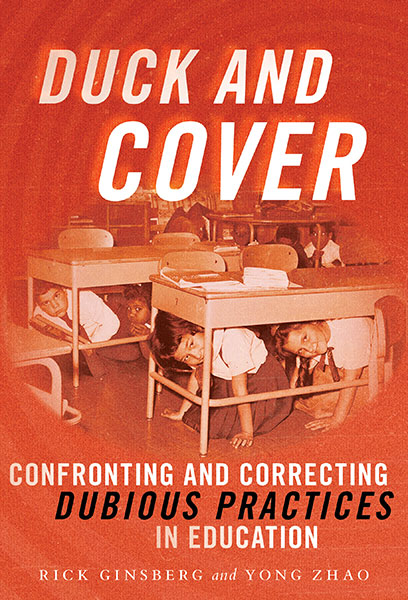
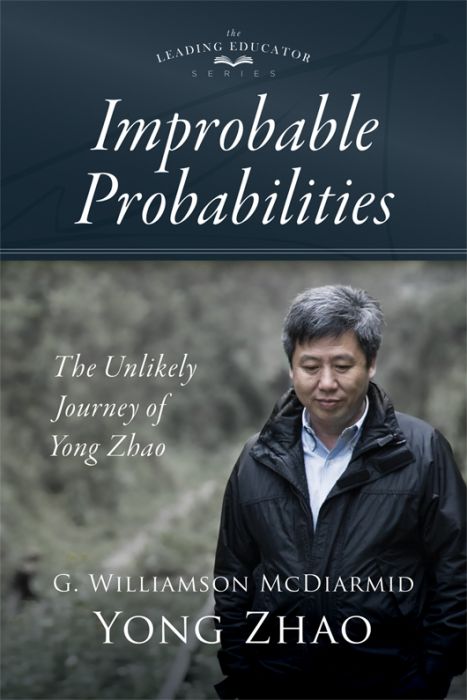
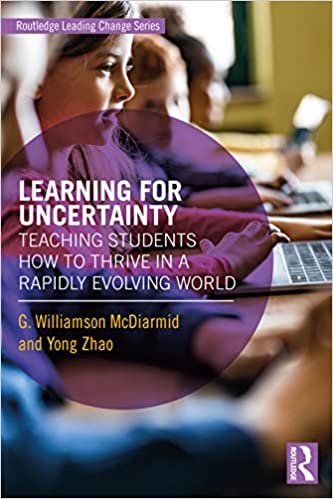
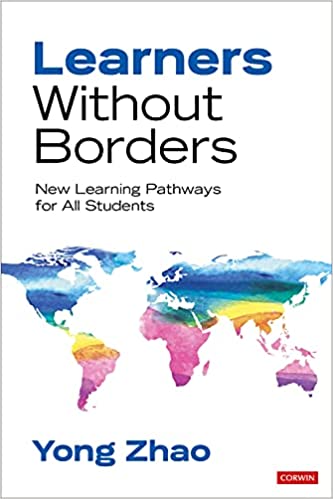



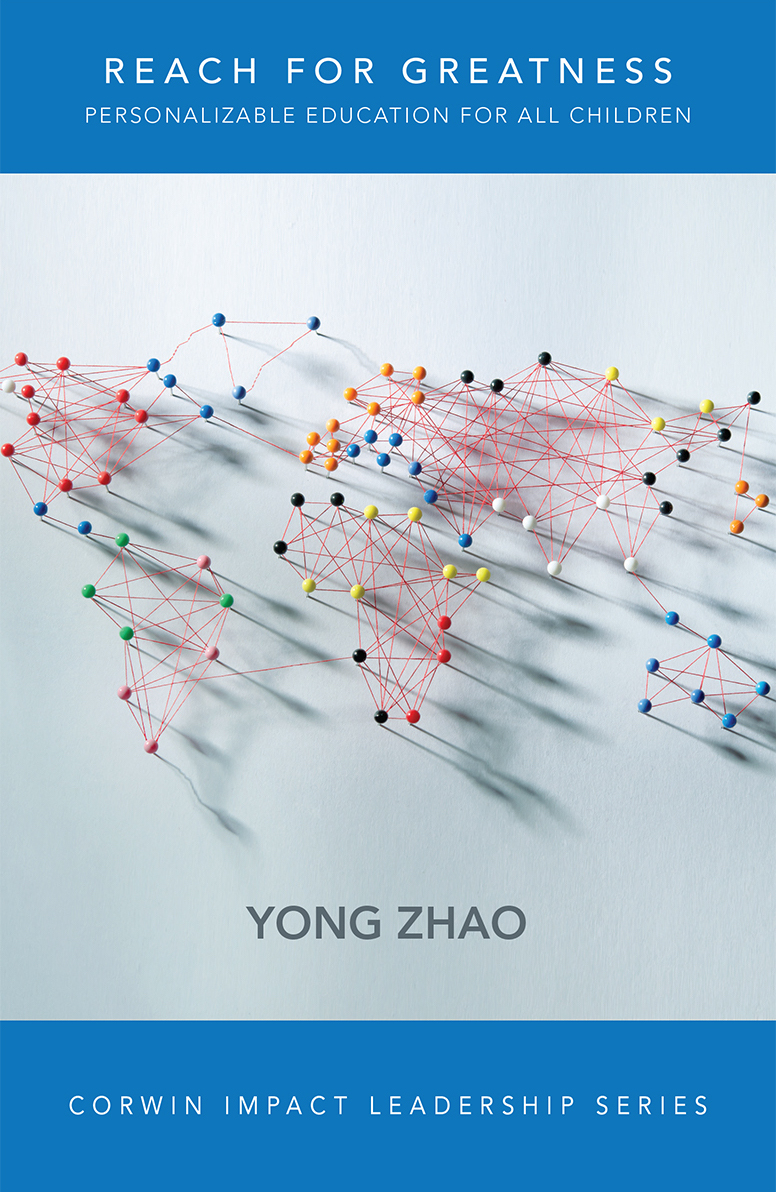
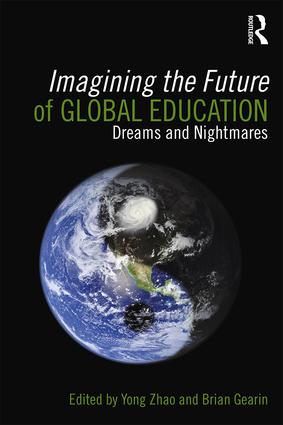
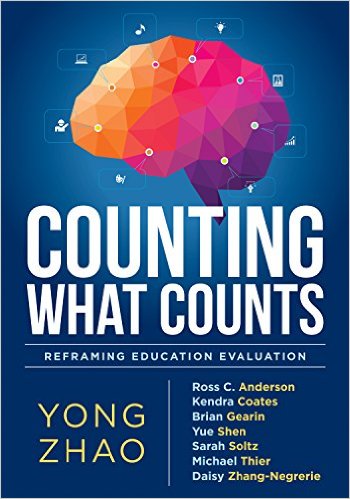
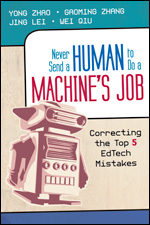
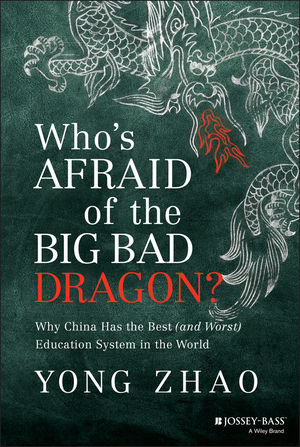
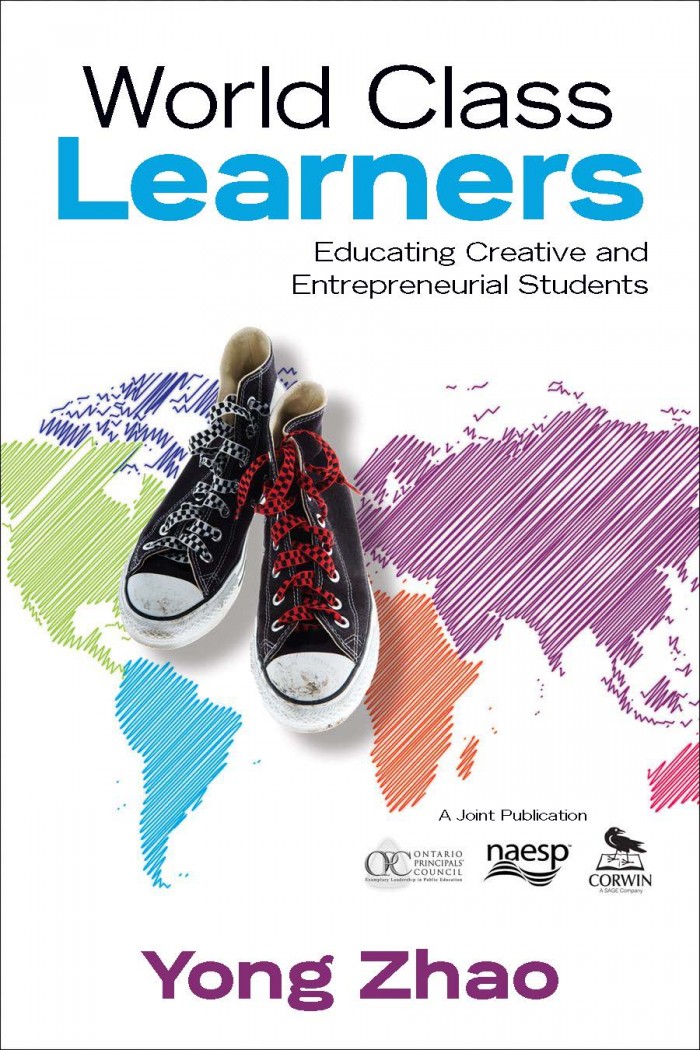

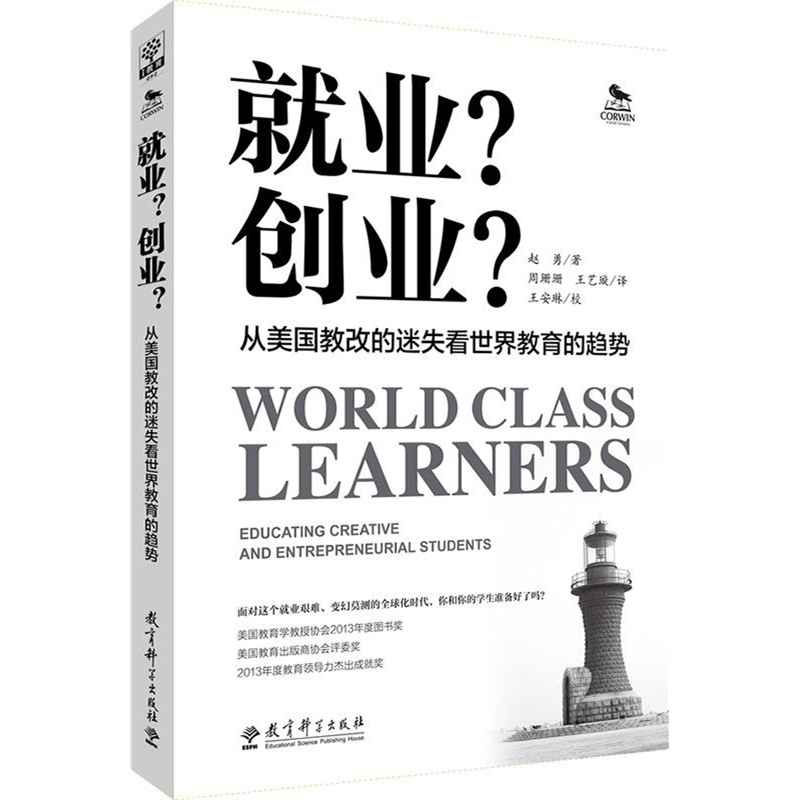
















[…] YongZhao China’s poorest beat our best pupils—The Telegraph (UK), 2-17-2014 Children of Shanghai […]
[…] Zhao and some other commentators have been criticising PISA for a number of reasons, one being that its sample populations are at times ‘gamed’ by two cities (Shanghai and […]
[…] this fourth installment in his series of posts criticizing PISA, Yong Zhao examines the claim that low-income children in China […]
[…] this fourth installment in his series of posts criticizing PISA, Yong Zhao examines the claim that low-income children in China […]
[…] THEN THERE’S PISA… Yong Zhao tells us how the international testing competition race to the bottom has pushed China off the deep end. His […]
[…] Does PISA Put the World at Risk.” Last week he released Part 4 of the series, “Misleading the World.” (His argument is long.) Essentially, he says that students in the U.S. are learning very […]
[…] How Does PISA Put the World at Risk (Part 4): Misleading the World Education in the Age of Globalization […]